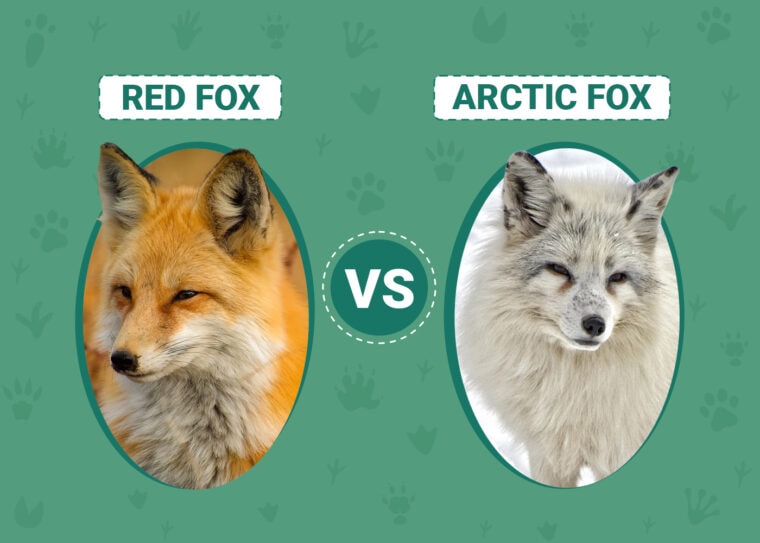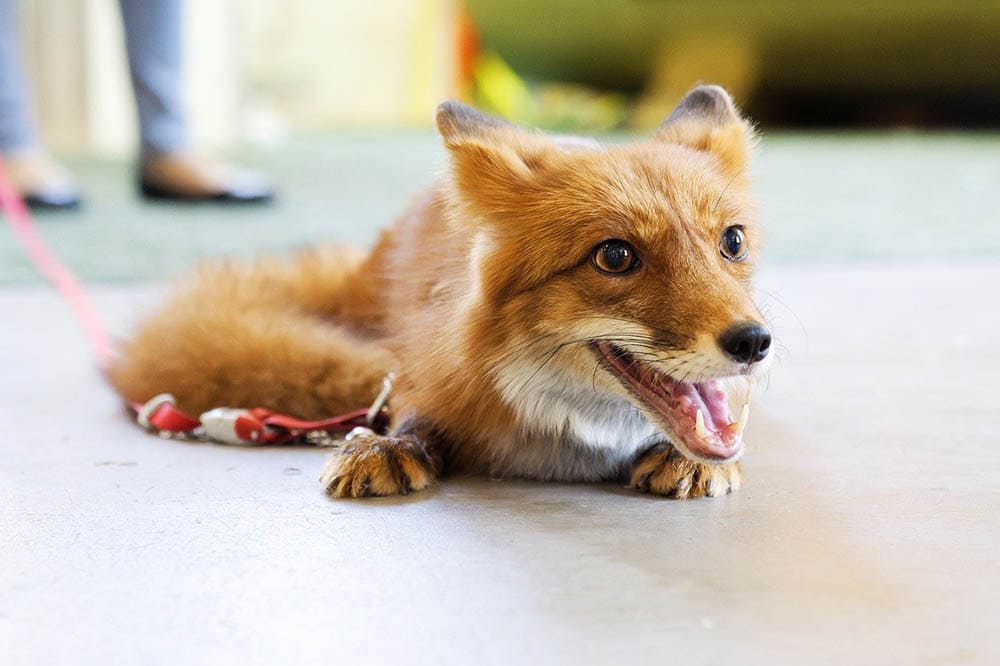
When most people think of a fox, they probably imagine a long, mid-sized, sleek, dog-like creature with red fur. This is definitely a fox, but it’s not the only type of fox. If this is what you imagined, then you’re picturing a red fox, which is the most common and widespread fox species. But Arctic foxes are arguably one of the most beautiful fox species. Even though the red fox is an adorable critter, the Arctic fox can definitely give it a run for its money.
So, what are the differences between these two fox species? How can you tell them apart? We’re going to answer both of those questions before the end of this article.
Visual Differences

A Quick Overview
Red Fox Overview

Red foxes are the most common and largest of all fox species. They’re what most people think of when you say fox. For instance, the fox from the movie The Fox and the Hound was a red fox.
Appearance
As you might guess from the name, red foxes are red. Their fur is red over most of their body, though there might be some gray or black patches on the body or ears. The underside can also be white.
Size
Of all foxes, red foxes are the largest. They’re still only about as large as a medium-sized dog, topping out at a height of 20 inches at the shoulders. That would be a huge specimen though; most are closer to 16 inches or so.
Red foxes also have a bit of heft to them. Some of the smaller ones might only weigh 10 pounds, but larger specimens can reach weights of up to 30 pounds; twice as heavy as a large Arctic fox.

Mating Habits
Some fox species are monogamous, but not red foxes. While a male might mate with the same partner for life, he also might take several partners. It’s not just males though, females have also been observed surrounded by males during mating season.
Habitat
The red fox is about as diverse and adaptable of an animal as there is. They can survive and even thrive in deserts, grasslands, plains, and even deserts. This is part of why they’re the most common and far-spread fox species. You can find red foxes in most environments on earth.
Arctic Fox Overview

All foxes are pretty cute, but Arctic foxes possess an elegance that few creatures in the animal kingdom can match. They’re not quite as big or common as red foxes, and they tend to stick mainly to the northernmost regions, so you probably won’t encounter one unless you live in an Arctic area.
Appearance
Arctic foxes are instantly recognizable and easy to distinguish from red foxes. They have an elegant, all-white coat that covers their entire head and body with no other colors present. This allows them to blend in perfectly with the snow in the Arctic environments where they live.
Size
Foxes are all relatively small creatures, but Arctic foxes are considerably smaller than red foxes. With an average height of just 10 to 12 inches at the shoulders, some red foxes are twice as tall as their Arctic cousins. Similarly, large red foxes can weigh twice as much as even the largest Arctic foxes.

Mating Habits
While red foxes have been known to be promiscuous, Arctic foxes tend to be monogamous. They pick one partner and mate for life. This could be partially due to the lower numbers of mating options available and the fact that they’re spread out over incredible distances. Either way, Arctic foxes aren’t as free-loving as red foxes.
Habitat
Arctic foxes live only in cold places that see a lot of snowfall. They’re perfectly suited for a snowy environment, so that’s where you’ll find them. For the most part, they inhabit the areas that are too cold and harsh for other fox species.
In recent years, red foxes have been forcing their way farther north, encroaching on the habitat of Arctic foxes. When they meet, the smaller Arctic foxes generally lose the confrontation, which is beginning to have a negative effect on Arctic fox populations.
FAQ
Are Arctic foxes endangered?
The International Union for Conservation of Nature (IUCN) maintains a list of threatened and endangered species called the Red List. It’s considered to be the most comprehensive source of information on the extinction risk that different animal species are facing. According to the Red List, Arctic foxes are in the “least concern” category.
Are red foxes an invasive species?
In countries where the red fox population is native, they’re not an invasive species. However, red foxes have been introduced into several places artificially, including the United States and Australia.
In Australia, the foxes took just 100 years to spread across most of the continent, reducing the populations of native animal species along the way, including various marsupials, reptiles, rodents, small mammals, and more. Red foxes are considered an invasive species in the United States, as well as other areas where they’ve been artificially, often illegally, introduced.
Are red foxes and Arctic foxes monogamous?
For a long time, it was believed that all foxes are monogamous. But red foxes have been documented engaging in non-monogamous behavior. Arctic foxes, on the other hand, seem to be monogamous, in opposition to their red-furred cousins.
Wrapping Up
Red foxes and Arctic foxes are part of the same family and even the same genus, but they’re not the same species. Many differences separate these two fox species, from the color of their fur to their overall size and stature. Both are true displays of nature’s majesty, though red foxes can certainly become a nuisance when introduced into territories they’re not native to.
Related Fox Reads:
- How Do Foxes Communicate? What You Need to Know!
- Can You Have a Fox as a Pet? Here’s What You Need to Know!
Feature Image Credit: Top – Andrey_and_Lesya, Pixabay | Bottom – diapicard, Pixabay









